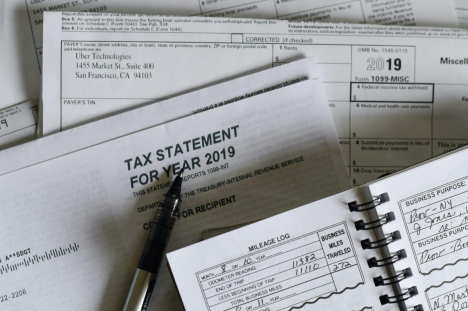In September 2021, the House Ways and Means Committee passed a measure to end the “backdoor” and “mega backdoor” Roth individual retirement accounts. I wanted to touch upon this subject because it’s made headlines in recent months, and I’ve had clients ask me questions regarding the mega backdoor Roth.
The story with mega backdoor Roth IRAs is a developing one. We will likely continue to get updates from the political and financial spheres in the coming months, but first, let’s look at exactly what a backdoor and mega backdoor Roth IRAs are.
These terms refer to a retirement tax strategy that allows wealthier individuals to avoid income and savings limits typically applied to standard Roth individual retirement accounts (IRAs). Essentially, these strategies allow wealthy Americans to add more money into Roth IRAs so that their money can sit without taxation while it grows; these accounts allow for tax-free investment growth. Along with upcoming withdrawals, these accounts don’t require distribution after 72
years of age. Controversy has erupted over whether or not the tax loophole should still be allowed.
Conventional IRAs and Roth
A traditional Roth IRA includes depositing funds into the account after you have already paid tax on it as you earned it. After that, the money within the account is 100% tax-free. With that said, income rules place restrictions on who can contribute to a Roth. The maximum IRA contribution limit of 2021 and 2022 is $6,000 and $7,000 for those 50 or above.
A Traditional IRA gives you a tax break on your contribution. From there, the funds grow tax-deferred, but you pay INCOME tax in retirement when you make a withdrawal.
Backdoor Roth
For people whose income is too high to be eligible for regular Roth IRA contributions, this strategy allows them to get money into a Roth IRA. First, you need to contribute to an IRA but not take the tax deduction. You now have money in a NON-DEDUCTIBLE IRA; you then can roll money from a traditional IRA to a Roth.
Since there aren’t any contribution or income limits, anyone can convert any amount of money into a Roth IRA. With that said, there’s a risk of receiving an expensive tax bill on the rollover if one has pretax money in another deductible IRA. This strategy works best if all pretax investments are not in workplace plans (401k, 403b, or 457 plans) and not IRA’s.
Click to Learn What Sets a Fee-Only Financial Advisor
Apart From Other Advisors
Mega Backdoor Roth IRA
The mega backdoor Roth works for people who have a 401(k) plan at work and income high enough to save $58,000 per year toward retirement. In 2021, account holders can put up to $19,500 into the 401k or Roth 401k. Some companies will allow an additional $38,500 of post-tax dollars into their plan, and in 2022, they can increase this to $40,500. The setup to achieve a successful mega backdoor Roth is not simple or without expense. But, for people with higher-income levels, it’s worth the expense of setting up a successful mega backdoor Roth and holding onto more money in the long run. Even so, it’s difficult to achieve a Mega Backdoor
Roth. There are many steps to the strategy, and there’s a risk of receiving very expensive tax bills. Any strategy like this will require the advice of a family financial planner or tax expert.
Recent Controversies
While backdoor Roth IRAs are not new, they’ve come into the spotlight recently because wealthy Americans have been using mega backdoor Roths to funnel more money away from the IRS. As of now, the House Ways and Means Committee believes it’s a loophole that only benefits the wealthy. At the same time, many middle-class and lower-income Americans feel subject to all types of taxation.
While eliminating the backdoor and mega backdoor Roth IRAs may pose a slight risk to affect families making less than $400,000 a year, many believe the positives outweigh the negatives of removing them. Congress also sees this as an opportunity to tax the rich and focus on social programs. Even so, the Biden Administration is trying to figure out ways to prevent that from happening. Until then, the mega backdoor Roth IRA is here to stay.
As of now, it looks like they are trying to eliminate this for 2022. There are no guarantees either way, but I would suggest inventorying your IRAs and 401ks looking for “after-tax” contributions. If you find after-tax contributions, I strongly suggest converting them to a Roth IRA, allowing the funds to grow tax-free rather than tax-deferred.
I will keep updating the blog with any developments regarding the backdoor and mega backdoor Roth IRA situation.
As a family financial planner, I work with people of all ages, young and old, to help them determine how best to make their money work for them and be prepared for what may arise down the road.
If you’re looking to learn more about Roth IRAs, please schedule a call. Also, if you’re new to working with an advisor, fear not! I have many long-standing clients that start with the question, “how do I start financial planning for my family?” We all start somewhere, and it’s never too early to.
Content in this material is for general information only and not intended to provide specific advice or recommendations for any individual.
Traditional IRA account owners have considerations to make before performing a Roth IRA conversion. These primarily include income tax consequences on the converted amount in the year of conversion, withdrawal limitations from a Roth IRA, and income limitations for future contributions to a Roth IRA. In addition, if you are required to take a required minimum distribution (RMD) in the year you convert, you must do so before converting to a Roth IRA.
A Roth IRA offers tax deferral on any earnings in the account. Qualified withdrawals of earnings prior to age 59 1/2 or prior to the account being opened for 5 years, whichever is later, may result in a 10% IRS penalty. Limitations and restrictions may apply.
Contributions to a traditional IRA may be tax deductible in the contribution year, with current income tax due at withdrawal. Withdrawals prior to 59 1/2 may result in a 10% IRS penalty ta in addition to current income tax.





